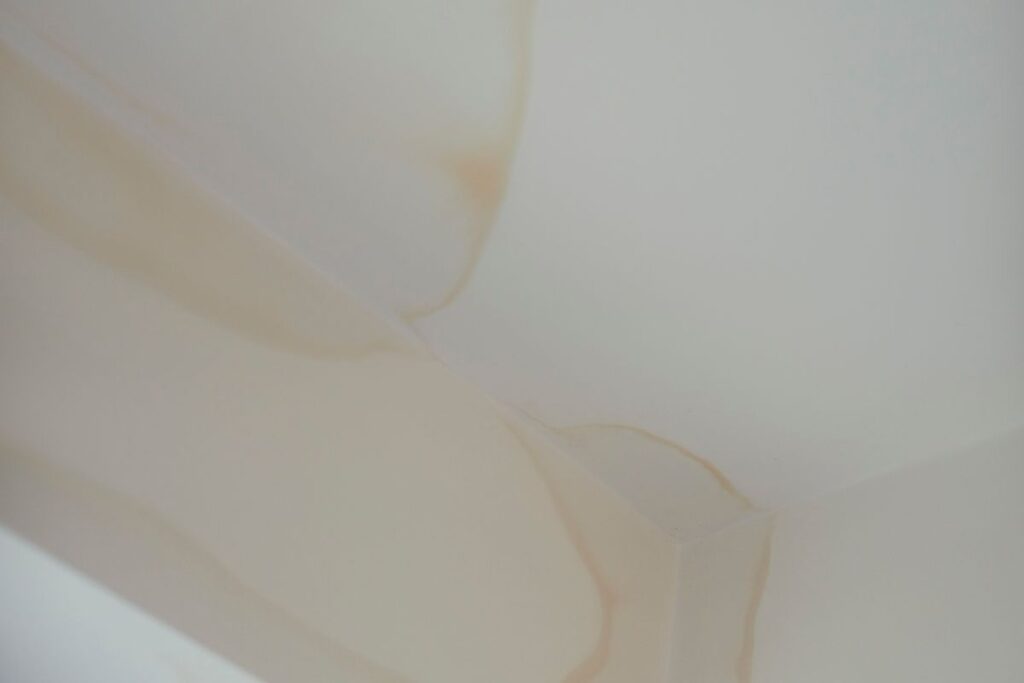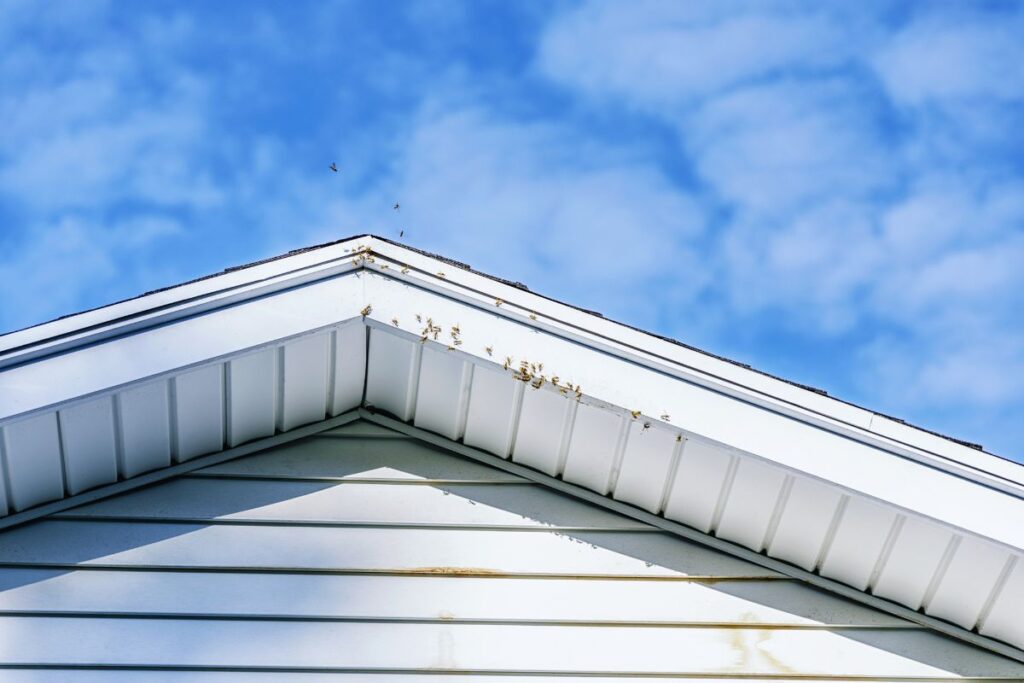Standing water on roofs is a common issue that many home and business owners face with their properties. Usually, this problem is caused by a clogged drainage system that keeps heavy rain and snowfall sitting on the roof with nowhere to go.
Due to the absence of slopes on commercial properties, they suffer the most from standing water, as compared to any other roofing system. If you are a business owner suffering from standing water, you need to figure out a plan to get rid of it as soon as possible. Luckily, this guide will aim to help you with that so you can handle your standing water problem effectively.
Common Causes of Standing Water on Roofs
There are a few different things that can lead to issues with standing water. Some of these reasons include:
1. Ineffective Drainage Systems
One of the primary reasons for standing water on roofs is inadequate drainage. Flat roofs do not have slopes, like pitched roofs do, which makes them more susceptible to water pooling. If your roof’s drainage system is blocked or poorly designed, water cannot flow off the roof effectively.
Clogged Gutters and Downspouts

Over time, gutters can get clogged with leaves, debris, or snow, which blocks the rainwater from flowing through the gutters and downspouts as intended. Instead, it overflows and pools around the base of your home or on the roof itself, only to cause trouble for the property.
Blocked Drains
Similar to gutters, drains on your roof can become obstructed by debris or sediment buildup. When drains are blocked, water cannot escape from the roof efficiently, leading to standing water.
2. Roof Design Issues
The most significant role that plays a huge part in effective drainage is the design. A roof’s design not only enhances the curb appeal of a building but also helps rain flow out to the gutters to keep your roof moisture-free.
Insufficient Drainage Points:
If your flat roof is built without enough drainage points, such as scuppers or internal drains, water can accumulate after rain events.
Sagging Roofs
Over time, some roofs may sag due to structural issues or excessive weight from accumulated materials. This sagging creates low spots on the roof, where water can gather in.
3. Damaged Insulation
Many flat roofs utilize tapered insulation. However, over time, the insulation beneath your roof can become compacted or damaged. This is especially true if heavy equipment is placed on top, or if there is a significant amount of foot traffic on the roof.
Indentations:
When insulation is compromised, such as being walked on, it can create indentations where water gathers. This pooling can lead to leaks and other damage if not addressed quickly.
4. Debris Accumulation
Leaves, branches, and other forms of debris can block drains and gutters after a certain period of time. This stops the easy flow of rainwater through to the gutters, scuppers, or other drainage outlets.
5. Heavy Rainfall or Snowmelt

During heavy rains or rapid snowmelt, roofs can become overwhelmed with water.
Temporary Pooling
While some pooling may be normal immediately after a storm, any standing water that lasts longer than two days should be addressed. If you notice persistent pooling after storms, it’s essential to investigate further.
Consequences of Standing Water
If you leave pooling water untreated, it can lead to some major issues in the future.
1. Roof Damage

Exposure to unwanted moisture can weaken roofing materials and lead to leaks. Over time, this can result in significant structural damage that requires expensive repairs.
2. Mold Growth

Stagnant water creates an environment for mold and mildew to thrive. Mold not only damages your roof but also poses health risks for you and your family.
3. Insect Infestations

Standing water attracts pests and insects like mosquitoes and flies, which carry different diseases that cause health hazards for people.
4. Unpleasant Odors
Unwanted water often leads to foul smells due to different bacteria growing and decaying on top of roofing materials, which can cause serious functional issues and make your living conditions uncomfortable.
How to Fix The Problem of Standing Water
Addressing standing water requires a proactive approach. Here are some effective strategies:
1. Practice Regular Maintenance
Inspect Your Roof Regularly:
Make it a habit to check your roof at least twice a year—once in the spring and once in the fall. It’s even best to check after heavy storms.
Clean Gutters and Downspouts:
Ensure that gutters and drains are free from leaves and debris so that rainwater can flow freely away from your home. Remove any leaves or branches from your flat roof too that could block drainage points.
2. Improve Drainage Systems
If you notice persistent standing water on your flat roof:
Add More Drains:
Consider installing additional drains if necessary. A professional roofing contractor can assess your current drainage system and recommend improvements.
Check Existing Drains:
Ensure that existing drains are functioning correctly by testing them during rainstorms and clearing any blockages immediately.
3. Adjust Roof Design
If the design of your roof contributes to standing water issues:
Consult a Roofing Expert:
A professional can assess whether modifications are needed to improve drainage efficiency.
Re-Slope Areas:
If certain areas of your flat roof are sagging or improperly sloped, utilize tapered insulation to redesign the slope so that accumulated rainwater flows directly into drains rather than pooling.
4. Replace Damaged Insulation
If you suspect that the tapered insulation has become compacted or damaged and contributing to pooling:
Inspect Insulation:
Consult a roofing professional/contractor to check the insulation beneath your roof for any possible roof damage.
Replace as Needed:
Immediately replace any damaged insulation to restore proper drainage capabilities.
5. Acknowledge Weather Conditions
Keeping yourself updated on the possible weather conditions you may experience in the upcoming days or weeks is helpful to ensure your roof will be able to sustain it.
Check for Pooling
After a rain or snowstorm, you must inspect your roof thoroughly to look for any standing water on your roof.
Take Action Quickly
If you see any water pooling that lasts longer than 48 hours, do not forget to take action immediately by hiring professionals to clean the gutters and maintain the natural flow of water.
Contact Us For More Details
Standing water on roofs is an issue that should not be ignored at any chance. By understanding its causes, you can maintain a clean and moisture-free roof and get rid of your inadequate drainage systems, design flaws, and debris accumulation. If your roof is suffering from any form of damage, our experts at Prestige Roofing LLC can offer consultations regarding your troubles and help you inspect your roof. For any further roofing concerns, reach out to us at (920) 791-0414 and find out how we can help you!

